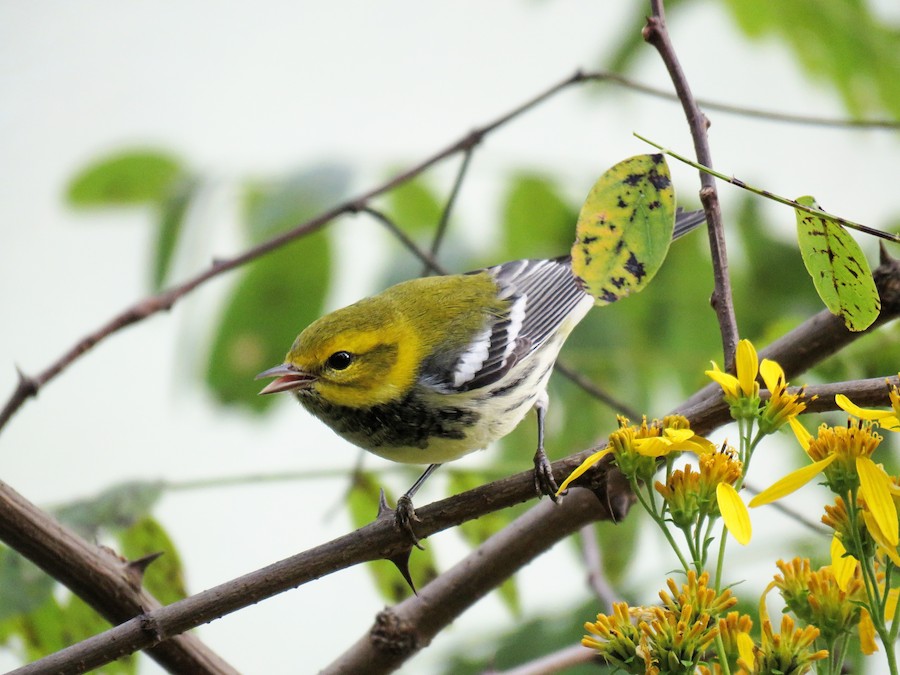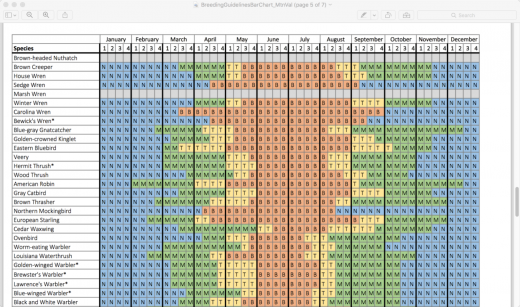By Ashley Peele

Black-throated Green Warbler Setophaga virens © Phil Lehman
This is a question we often find ourselves asking each spring, as residents birds get busy with their breeding activities and migratory birds begin moving through Virginia.
The simplest way to address this question is to consult our handy Breeding Timeline Charts found on the Atlas website (vabba2.org). These charts are organized by eco-region, i.e. Coastal Plain – Piedmont – Mountain/Valley.

Example of Mountain-Valley Breeding Timeline Chart
Timelines parse out each species’ annual cycle by Non-breeding (N), Migrating (M), Transition (T – migrating or breeding), and Breeding (B). Typically, we want to wait until a species is within the Breeding (B) window before we start applying breeding codes.
However! The phenology, or timing of different stages of the annual cycle like migration and breeding, is shifting for many bird species. As a result, we are seeing substantial variability in breeding dates year by year. For this reason, we will accept high-level breeding codes outside of the established breeding seasons with appropriate explanation/justification. Examples of high-level codes can include: nest-building (NB), carrying nest material (CN), carrying food (CF), etc.
But, keep two important things in mind when reporting early breeding behavior observations:
1 – All early coding entries should include notes justifying the early code use.
For example, very early use of the CN code for White-breasted Nuthatch by an Atlas volunteer: “Observed two white breasted nuthatches carrying nesting material into tree cavity. There appeared to be small piles of wood shavings from cavity excavation that they were picking up carrying back into the cavity.”
2 – Avoid early coding of any lower level codes, during the transition window. These include H, S, S7, P, T, A, and C codes.
Note: we include the C code (courtship behavior or copulation) on this list, because many migratory species engage in these behaviors while en route to their final destination. Males and females may forage together, males may interact aggressively with one another.
Don’t forget! These beautiful little male warblers are loaded up with testosterone in preparation for arriving on their breeding site and staking out a territory. All those hormones mean that we might observe some pretty aggressive behaviors from passage migrants on their way to Vermont, Maine, even southern Canada. So! Best to leave such codes for the start of the safe breeding time in mid to late-May for most species.
~ Dr. Ashley Peele, VABBA2 Coordinator


